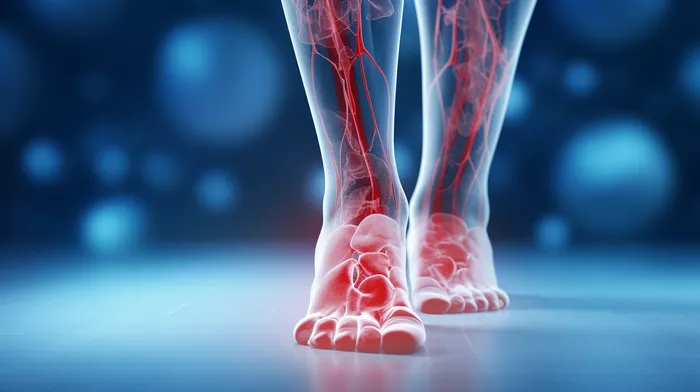Sleep deprivation is widely recognized as a cause of poor health; it contributes to increased pain and a decrease in feelings of well-being. One of the lesser-known causes of sleepless nights is restless leg syndrome (RLS), a condition that can drive those who suffer from it to distraction. While there are Food and Drug Administration-approved drugs for treating RLS, a more natural approach is also available.
Defining RLS
RLS is a neurological disorder characterized by throbbing, pulling, creeping, or other unpleasant sensations in the legs, coupled with an uncontrollable and sometimes overwhelming urge to move them. It is related to a dysfunction of the brain’s basal ganglia circuits that use the neurotransmitter dopamine, which is required to produce smooth, purposeful muscle activity and movement.
Who Gets RLS?
According to the National Institute of Neurological Disorders and Stroke, up to 10 percent of the U.S. population may suffer from RLS. Factors that increase the risk of RLS include fibromyalgia, which makes it 11 times more likely, and pregnancy. Additionally, women are twice as likely as men to have RLS, and end-stage renal disease and iron-deficiency anemia can also contribute to the onset of the condition. Children with ADHD are also more vulnerable to RLS.
RLS Symptoms
People suffering from RLS describe it as feeling like creepy crawly legs, trembling legs, and jumping legs. The syndrome is triggered by lying down and attempting to relax, and it is most active in the evening, particularly at bedtime. Its symptoms tend to be relieved or even nonexistent throughout the day. RLS often postpones the onset of sleep, causing activity-induced insomnia and delayed sleep. Moreover, shaking leg movements tend to wake people during the night, disrupting REM sleep.
Common Relief Methods
Various do-it-yourself approaches are used by RLS sufferers when symptoms intensify at night. These methods include:
- Getting up and walking around for a while
- Doing a few squats or leg lunges
- Massaging the legs
- Taking a hot bath or shower
- Rubbing legs vigorously with hands, a shower brush, or massage device
- Applying heat or ice packs
- Applying topical products like Icy Hot, Tiger Balm, etc.
- Drinking tonic water before bed, as it contains quinine, which helps calm nerves
Several people also claim that acupuncture, chiropractic, and the application of TENS units have helped decrease their RLS symptoms.
Dopamine Is Key
Overall, RLS is linked to low levels of dopamine. Increasing this neurotransmitter seems to be the most effective way to prevent and cure the condition. Since dopamine levels are dependent on L-tyrosine, magnesium, and iron, it is essential to control these levels in order to prevent and reduce symptoms of RLS. Food sources containing L-tyrosine, magnesium, and iron are the safest and most natural way to do so.
Food sources high in L-tyrosine:
- Spirulina
- Seaweed
- Soy protein
- Egg whites
- Low-fat cottage cheese
- Fish (cod, salmon, tuna, pike)
- Shrimp
- Pork
- Mustard greens
- Chicken
- Buffalo
Food sources high in magnesium:
- Leafy vegetables (spinach, Swiss chard, kale)
- Nuts (Brazil, almond, cashew, pine)
- Seeds (squash, pumpkin, sesame)
- Fish (halibut, mackerel, pollock)
- Beans, lentils, soy, white beans, French beans, black-eyed peas, and kidney beans
- Avocados
- Grains like brown rice and quinoa
Food sources high in iron:
- Seafood (clams, mussels, oysters)
- Liver
- Seeds (squash, pumpkin, sesame)
- Nuts (cashews, pine, hazel)
- Meat (beef and lamb tenderloin)
Recommendations
Exercise also raises dopamine levels, increases calcium in the blood, and stimulates dopamine production and uptake in the brain. For those suffering from RLS, it is recommended to practice 30-60 minutes of exercise every day, particularly during the daytime. Walking, hiking, bike riding, and swimming are fun, low-impact activities to take up. In the evening, adopting a diet that includes the food sources listed above will help regulate dopamine levels, and when RLS symptoms occur, trying some of the commonly used relief methods to see which works best for you is a good idea.
For more information, visit:
- [http://www.rlcure.com/]
- [http://www.ncbi.nlm.nih.gov/pubmed/17604457]
- [http://nutritiondata.self.com/foods-000087000000000000000-1.html]



